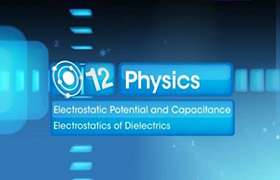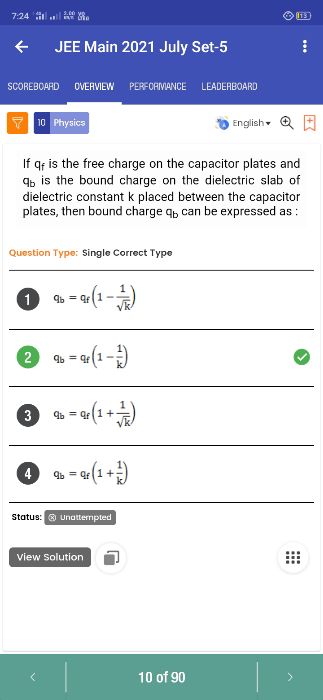CBSE Class 12-science Answered
Conclusions concerning the relation between electric fields and potential.
Asked by Jogy Jacob | 22 Jun, 2013, 08:06: PM
1. By definition E = -dV/dr
V = -E.dr
V = -E*dr *cos(theta), where theta is the angle between the local electric field vector and displacement vector (dr)
Note that  attains its most negative value when
attains its most negative value when  . In other words, the direction of the electric field at point
. In other words, the direction of the electric field at point  corresponds to the direction in which the electric potential
corresponds to the direction in which the electric potential  decreases most rapidly.
decreases most rapidly.
2. Electric field is perpendicular to the equipotential surface. And using the above formula,
E = -dV/dr
we can conclude, that the magnitude of the electric field is given by the change in potential per unit displament in the direction normal to the equipotential surface.
Answered by | 23 Jun, 2013, 08:36: AM
Concept Videos
CBSE 12-science - Physics
Asked by aishaisha091098 | 19 Apr, 2024, 04:54: PM
CBSE 12-science - Physics
Asked by dasrituparna1999 | 13 Apr, 2024, 06:56: AM
CBSE 12-science - Physics
Asked by khankaifi178 | 08 Jan, 2024, 10:12: PM
CBSE 12-science - Physics
Asked by sankaraganapathy007 | 09 Sep, 2023, 10:03: PM
CBSE 12-science - Physics
Asked by bmahalik21 | 05 Mar, 2023, 08:23: PM
CBSE 12-science - Physics
Asked by s3043632 | 22 Jan, 2023, 06:45: PM
CBSE 12-science - Physics
Asked by carnivalgirl8421 | 29 Jun, 2022, 11:18: AM
CBSE 12-science - Physics
Asked by priyr7687 | 28 Jun, 2022, 06:19: PM
CBSE 12-science - Physics
Asked by tahseenaamir07 | 25 Jun, 2022, 01:33: AM
CBSE 12-science - Physics
Asked by ekanathtanpure77 | 23 Jun, 2022, 07:56: PM








